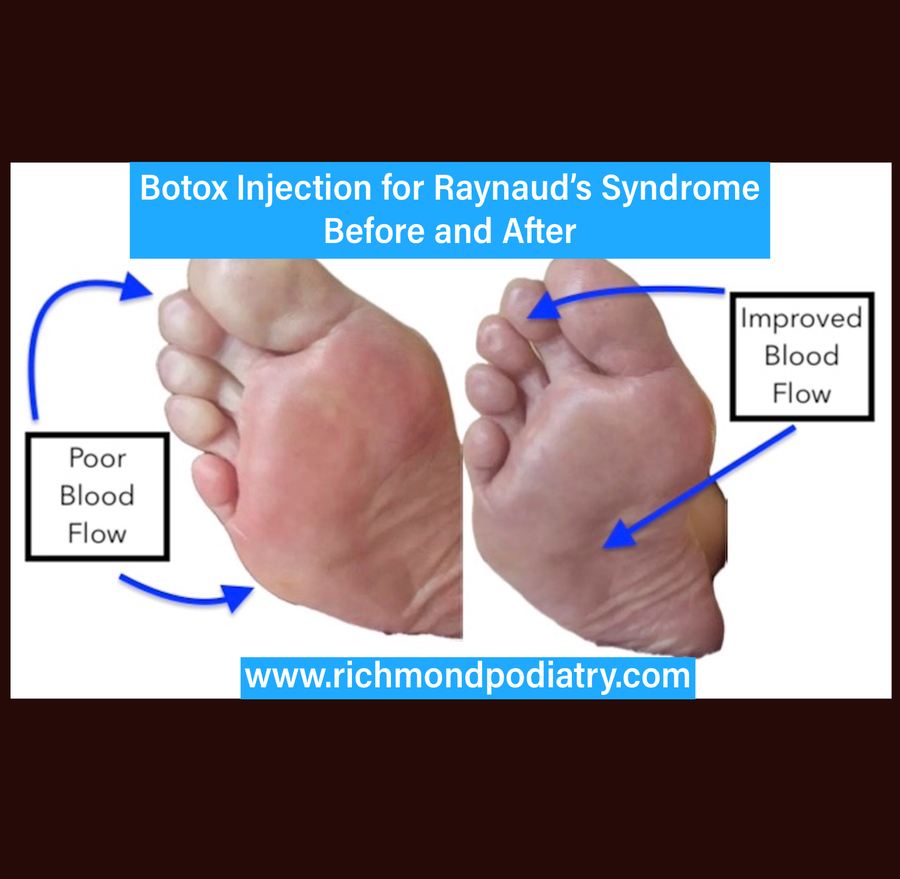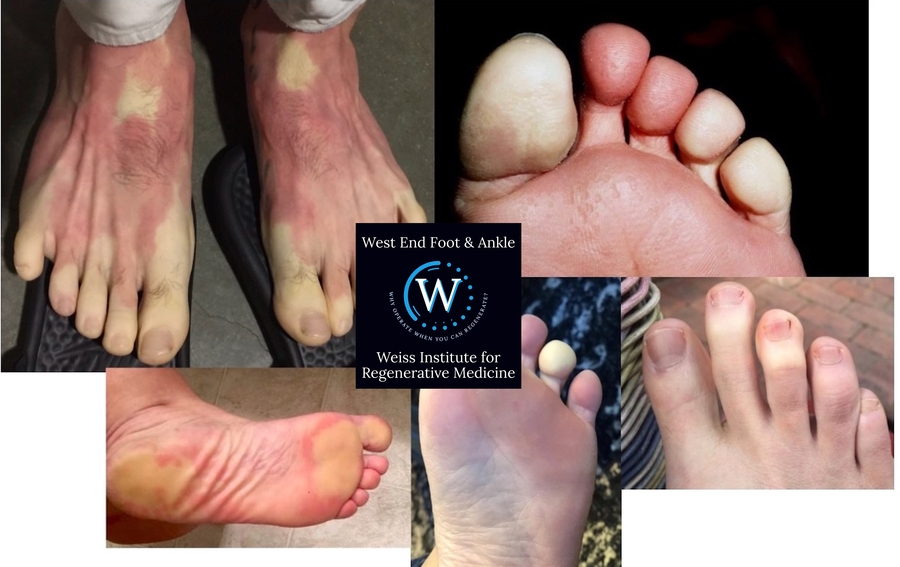RICHMOND, VA, November 23, 2023 /24-7PressRelease/ -- Do you or a family member suffer from painful feet / toes when the weather gets cold? This may be a very common condition called "Raynaud's Syndrome."
At Weiss Institute for Regenerative Medicine, we have developed a specialized treatment to help our patients during these colder months.
What is Raynaud's?
Raynaud's phenomenon is a vascular disorder characterized by episodic vasoconstriction (the narrowing of blood vessels) of the arterioles, primarily affecting the extremities. This condition can lead to significant morbidity, particularly when it involves the feet and toes. Patients with Raynaud's phenomenon may experience profound changes in skin coloration in response to cold temperatures or stress.
Clinical Manifestations in the Feet and Toes
Patients with Raynaud's affecting the lower extremities often report coldness, numbness, and tingling in the toes, accompanied by color changes. During an attack, the toes may first appear white (pallor) due to the lack of blood flow, then blue (cyanosis) as the tissues begin to deoxygenate, and finally red (rubor) as the attack subsides and blood flow returns.
Pathophysiology (How does this happen?)
The pathophysiological mechanism underlying Raynaud's phenomenon involves an exaggerated response of the sympathetic nervous system (nerves responsible for the "fight-or-flight response"), resulting in intense peripheral vasoconstriction. The feet and toes, because they are at the end of the body, are especially susceptible to these vasospastic attacks, which can lead to tissue ischemia, ulceration, and in severe cases, gangrene.
Treatment:
Initial treatment strategies focus on conservative measures, such as:
- Thermal regulation: Keeping the feet warm with insulated footwear and heated insoles.
- Lifestyle modifications: Avoidance of cold exposure and cessation of smoking to reduce vasoconstriction. Excessive caffeine intake can also be a factor.
- Pharmacotherapy: Topical medications, such as Nitroglycerin, can help increase the blood flow in the toes. Calcium channel blockers (like nifedipine) are commonly used to reduce the frequency and severity of vasospastic episodes.
Botox Injections
Botulinum toxin type A (Botox) has emerged as a novel treatment for severe Raynaud's phenomenon. Botox is a potent substance that, when injected locally, can inhibit the release of neurotransmitters responsible for vasospasm. In other words, it blocks the chemicals that cause the muscles around the blood vessels to close down. Botox essentially "opens up the arteries" to the affected areas. Dr. Weiss has developed a novel technique for this in-office procedure. The results are long-lasting and typically are effective throughout the cold months of the year.
Clinical Benefits
The use of Botox for Raynaud's phenomenon in the feet and toes has shown promising results. Benefits include:
- Reduction in the frequency and severity of vasospastic attacks.
- Improvement in skin temperature and color.
- Alleviation of pain and discomfort associated with ischemic episodes.
- Enhanced quality of life by mitigating the impact of Raynauds on daily activities.
Dr. Weiss states, "Many of my patients have told me that they notice a dramatic reduction of pain and discomfort after receiving this treatment. They often describe having an overall feeling of warmth in their feet."
Procedure and Safety
The procedure involves injecting Botox directly into the affected areas of the feet. It is generally well-tolerated, with a low incidence of adverse effects. The most common side effects are transient pain at the injection site and mild bruising.
Conclusion
Raynaud's phenomenon can significantly affect the feet and toes, leading to discomfort and potential tissue damage. Botox injections represent a viable treatment option for patients with severe symptoms, particularly during colder months when vasospastic attacks are more frequent. Patients interested in this treatment should consult with Dr. Weiss to determine their suitability for Botox therapy and to discuss potential risks and benefits.
Weiss Institute for Regenerative Medicine is the premier treatment center for foot and ankle problems. Dr. Weiss and his staff are always on the cutting edge of new advancements in regenerative medicine. Although he is an accomplished, board certified surgeon (American College of Foot and Ankle Surgery), he strives to keep his patients out of the operating room by tapping into the body's own abilities to heal itself. He is one of the few podiatrists who is a member of the American Academy of Stem Cell Physicians.
Why Operate When You Can Regenerate?
Call today at (804) 346-1779 for a consultation. To learn more about us, visit our website.
# # #
Contact Information
David Weiss
Weiss Institute For Regenerative Medicine
Richmond, VA
United States
Telephone: 8043461779
Email: Email Us Here
Website: Visit Our Website
Blog: Visit Our Blog






